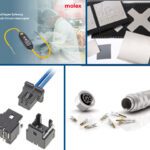Patient Care in the Medical Market
By Jenny Bieksha, Bishop & Associates
October 16, 2012
With the evolution of electronic health records, consumer platforms, and cloud computing, the medical ecosystem is changing dramatically. It is no longer just “a device, a patient, and a physician.” The use of medical electronics in patient healthcare has grown beyond the traditional hospital setting or doctor’s office to include outpatient and urgent care centers, clinics, and the patient’s home. Home healthcare continues to grow rapidly because of factors such as aging populations, increasing healthcare costs, and demand for access to healthcare resources in remote and rural areas.
Technology advances in electronic consumer devices and the telecommunications industry are converging at a rapid rate with medical device technology. As more advanced applications and smart technologies enter the consumer market, patients will continue to raise their expectations of the capabilities of medical devices and diagnostics. Portable medical equipment such as blood pressure monitors and blood glucose meters are now connecting to data hubs, transmitting personal health data to the medical cloud. Medical imaging technology, commonly found in radiology or imaging centers, can now be found in the field.
Wired and Wireless Solutions Coexist in Healthcare
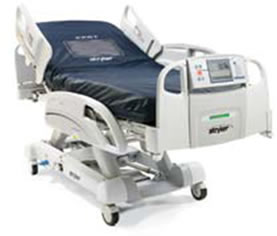 With technological advances and new standards definition, healthcare providers are integrating wireless healthcare as part of the global healthcare system. While presenting great opportunities, wireless healthcare still faces several challenges before there can be full adoption. Wired and wireless solutions will continue to coexist for some time.
With technological advances and new standards definition, healthcare providers are integrating wireless healthcare as part of the global healthcare system. While presenting great opportunities, wireless healthcare still faces several challenges before there can be full adoption. Wired and wireless solutions will continue to coexist for some time.
The hospital environment is often the first one that comes to mind when considering medical devices and technology that support patient care. Today, the majority of hospital patients are still attached to monitoring and treatment devices by wires. These devices are attached to the wall beside the bed and wired into the hospital infrastructure.
The simple hospital bed has been transformed into a highly networked device, powered and equipped to monitor the status of the patient and transmit the data remotely to a nurse station. Patient monitoring functions may include a pulse oximetry unit, heart rate monitoring, blood pressure monitoring, ECG, blood glucose meters, and an infusion pump. Extra features include tilt control mechanisms, powered wheels to facilitate movement of the patient, USB and Ethernet ports to provide connection with a PC or the hospital network, VoIP gateway to provide direct communication to the nurses’ station, and an LCD screen and keypad for user interface.
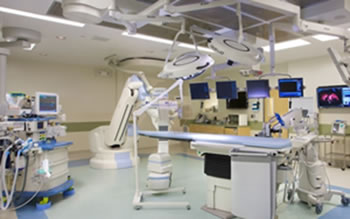 Outside of the patient’s room, many of the complex pieces of equipment used in medical imaging require extraordinary processing and RF power. Modalities, such as magnetic resonance imaging (MRI), computed tomography (CT) scans, and ultrasound, all push the performance limits for advanced integrated I/O, rigorous data processing, powerful display capabilities, and high levels of connectivity. Most of this equipment has the ability to interface with wireless devices for various functions. Smaller, portable versions are also used outside the clinical environment.
Outside of the patient’s room, many of the complex pieces of equipment used in medical imaging require extraordinary processing and RF power. Modalities, such as magnetic resonance imaging (MRI), computed tomography (CT) scans, and ultrasound, all push the performance limits for advanced integrated I/O, rigorous data processing, powerful display capabilities, and high levels of connectivity. Most of this equipment has the ability to interface with wireless devices for various functions. Smaller, portable versions are also used outside the clinical environment.
There is an increasing need to wirelessly network healthcare equipment. Higher density data interfaces are being adopted in medical equipment to ensure secure routing of data signals for both their internal and external interfaces. Wireless healthcare represents an opportunity to improve the healthcare system by making information-sharing easier with electronic access to labs and other test results to help speed diagnostic and decision-making. Many of the older healthcare facilities are being upgraded or retrofitted to accommodate these changing needs.
Wireless medical devices are often used only for the most critical cases in hospitals today. The initial equipment installation is expensive and hospital Wi-Fi networks are often overloaded with data traffic from a multitude of users. Medical personnel use laptops and tablets to view and input patient data, employees bring their own wireless devices to work, and patients and family members use their own devices for entertainment and communication.
The iPhone, iPad, and their health-related accessories have become standard fixtures in many hospitals and medical practices, and patients are using these devices to monitor their own conditions from home. However, with Apple’s integration of the new Lightning connector into the iPhone 5 (and other upcoming products), we may see a gradual shift in the use of iOS devices in healthcare. Many of the devices currently in use had to gain approval from the FDA before they could be put on the market, and using an adapter may not be an option. It is possible that just rebuilding a medical device around the new connector would require another round of FDA approval. This may be the impetus needed to move toward developing healthcare solutions with devices that are not bound to specific physical connections, increasing the range and use of devices both in healthcare settings, as well as in home care and monitoring settings.
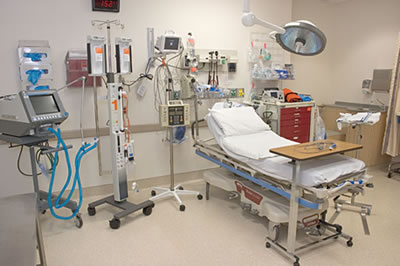 Wireless LAN (WLAN) is currently the most widely deployed connectivity infrastructure in hospitals. Within the hospital environment, Bluetooth technology supplies local connectivity to patient connections and data collection devices. In the emergency care setting, the needs are for rugged and very mobile battery-powered patient monitors. Wireless technology provides local connectivity for sensors, eliminating the cables that can interfere with patient care in time-critical situations and providing for mobile connectivity solutions.
Wireless LAN (WLAN) is currently the most widely deployed connectivity infrastructure in hospitals. Within the hospital environment, Bluetooth technology supplies local connectivity to patient connections and data collection devices. In the emergency care setting, the needs are for rugged and very mobile battery-powered patient monitors. Wireless technology provides local connectivity for sensors, eliminating the cables that can interfere with patient care in time-critical situations and providing for mobile connectivity solutions.
There are still key issues that must be addressed before wireless healthcare technology becomes widespread. Data security is one of the most pressing issues, including access security in all the hardware devices in the system, security in data transmission, and data storage security. Physical connectivity can be a huge challenge, especially if the location of operation is situated in areas that do not allow proper signal transmission. Another factor is interoperability among equipment using different wireless technologies.
Home Healthcare: Not Just for Seniors
Monitoring healthcare systems represent an important element in the healthcare continuum. The ability to monitor the medical conditions of a patient living in a remote location lifts a huge pressure off the system in terms of cost and logistics.
There is increasing availability of health-related peripheral devices to track and upload information in real time via a wireless or wired connection to devices such as smartphones and tablets. Some of these devices are targeted towards home healthcare and patients interested in closely monitoring their health status; others facilitate the exchange of information between patients, hospitals, clinics, and physicians. Examples include blood pressure monitors, insulin pumps, pulse oximeters, ECG monitors, portable ultrasound, and implantable devices.
 A home hub connects devices to the Internet, allowing remote caregivers and family members to monitor basic activities of the patient. A telehealth monitor may be connected to various personal health devices via Bluetooth, while at the same time being connected via a wireless network so that the doctor can monitor the patient’s status in real time. Proximity-sensing devices can be connected to provide location information. Obviously, connectivity is an essential function of home healthcare devices.
A home hub connects devices to the Internet, allowing remote caregivers and family members to monitor basic activities of the patient. A telehealth monitor may be connected to various personal health devices via Bluetooth, while at the same time being connected via a wireless network so that the doctor can monitor the patient’s status in real time. Proximity-sensing devices can be connected to provide location information. Obviously, connectivity is an essential function of home healthcare devices.
Another technology that is expected to play a key role in the patient-monitoring arena is medical body area networks (MBANs). MBANs are low-power wideband networks consisting of multiple body-worn sensors that transmit a variety of patient data to a control device. The devices can be attached to a patient in a hospital or post-care settings, providing a cost-effective, real-time method to monitor patients.
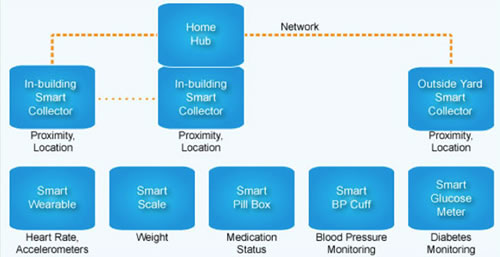
Outlook for the Medical Device Market
The worldwide medical device market is valued at more than $300 billion annually. There is increasing pressure from governments, insurers, and patients to bring down healthcare costs. Top-line growth is still forecast for the industry in 2012, but the pending medical device tax and mounting pricing pressures from regulators around the world will likely lower profits for device companies. In spite of these challenges, there are still opportunities for growth in the medical device market.
Medical device makers are pursuing a greater share of sales from emerging markets as they face market saturation domestically. Demand for medical products and services will increase in emerging markets, as these economies grow and their populations age. The refurbished equipment market also holds near-term opportunities for growth. Principal end-users include small and medium healthcare institutions and developing countries. The major driving factor for the refurbished medical equipment market involves the affordable price range of refurbished devices.
Opportunities for interconnect manufacturers exist across the infrastructure and in a wide range of remote monitoring devices that exploit advances in bandwidth, networking, mobile telecommunication, RF technologies, and miniaturization. As we see recovery in the world economy, we will see demand increase, which in turn will drive development activities for medical products and services.
- Amphenol is On a Roll - April 2, 2024
- Nicomatic Proves That Two Heads are Better Than One - March 26, 2024
- ODVA Standards for Industrial Automation - March 19, 2024



